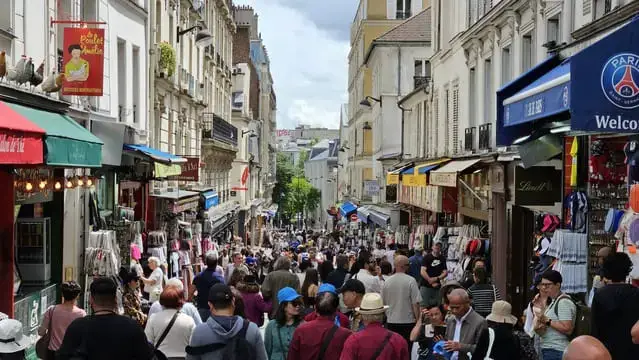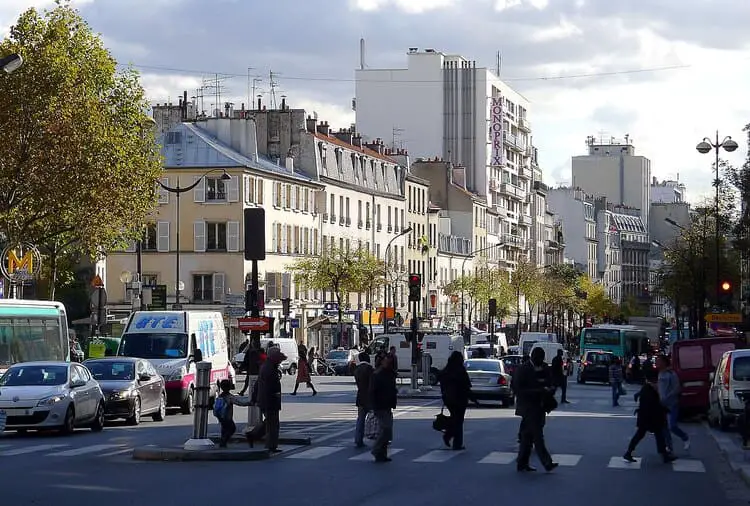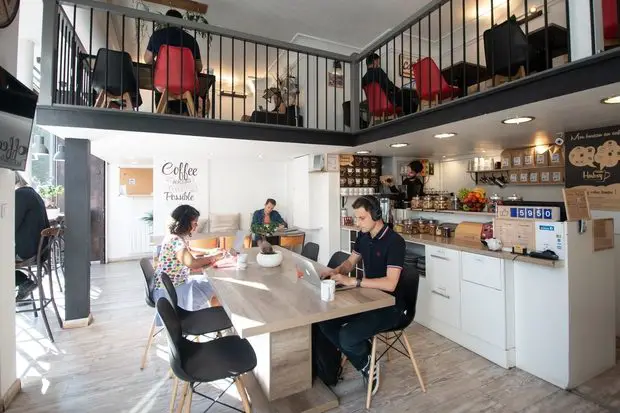Paris is magical, but like any major city, it has quirks that might surprise or frustrate you. Here’s what to know before you go to avoid disappointment.
1. The Romantic City Isn’t Always Romantic
Paris is famous for its romantic image—beautiful architecture, charming streets, and dreamy cafés.
While much of this is true, the city also has its challenges.
The streets can be crowded, noisy, and sometimes dirty. You might encounter trash on the sidewalks, graffiti, or traffic jams that ruin a scenic view.


Street performers can add charm, but loud music or vendors aggressively selling souvenirs might break the spell.
If you’re imagining a quiet, idyllic Paris like in movies, adjust your expectations.
Paris is beautiful, but it’s also a real city with real problems. Appreciate its charm without expecting perfection.
2. The Metro Is Both Amazing and Terrifying
Moins de métros et toujours plus de voyageurs : à Paris, le retour du «cauchemar» aux heures de pointe
➡️ https://t.co/bXAMh5qy1N pic.twitter.com/IJffeBPneY— Le Parisien | Paris (@LeParisien_75) October 24, 2022
Paris’s Metro is a lifesaver for getting around quickly, but it can be intimidating.
The stations are often crowded, and navigating large ones like Châtelet-Les Halles can feel like a maze.
Some older stations lack escalators or elevators, making it tough if you have heavy luggage or mobility issues.
The Metro can also get noisy and occasionally smelly, and delays do happen.
However, once you figure out the basics, it’s incredibly efficient. For example, you can get from the Eiffel Tower to Montmartre in 25 minutes for a fraction of a taxi’s cost.
Download the Bonjour RATP app for directions and updates, and try to avoid the Metro during rush hour (8-10 AM and 5-7 PM). With a little preparation, the Metro becomes your best friend in Paris.
3. Paris Is Expensive — Shockingly So

Paris is one of the most expensive cities in the world. Expect to pay €5–€6 for a coffee at a café and €15 or more for a casual lunch. Museum tickets can cost €18–€22, and hotel prices in central neighborhoods are steep.
For budget-friendly options, consider picnics with fresh baguettes, cheese, and wine from local markets. Free activities, like walking tours or exploring parks like Jardin du Luxembourg, help save money too.
Plan ahead to avoid sticker shock. Look for deals like discounted museum passes or all-day Metro tickets to manage costs. Paris is worth the price, but knowing what to expect makes it easier to enjoy without worrying about your wallet.
4. Homelessness and Migrant Camps Are Part of Paris’s Reality
Paris is a city of contrasts, and like many major urban centers, it faces challenges related to homelessness and migrant camps.
While most tourists focus on the city’s beauty, you might encounter temporary camps in certain areas, especially in neighborhoods like La Chapelle, Canal Saint-Martin, or even near central spots like Rue de Rivoli.
The situation is complex and ever-changing. Camps are regularly formed and dismantled as authorities and humanitarian groups work to address the needs of the people living in them.
If you see such camps during your visit, it’s important to approach the reality with empathy and awareness. These spaces reflect real struggles faced by vulnerable populations, including migrants.
5. French Customer Service Can Be Shockingly Blunt
In Paris, customer service is different from what many visitors are used to, especially if you’re from the US.
Waiters won’t hover or check on you constantly—it’s part of the culture. You might interpret it as rude, but it’s their way of giving you space to enjoy your meal.
Similarly, shopkeepers might seem direct or uninterested. If you walk into a store and don’t greet them with a polite “Bonjour,” you might receive a cold response.
Remember, manners matter here.
To have a better experience, always start interactions with “Bonjour” and use “S’il vous plaît” (please) and “Merci” (thank you). You’ll find Parisians much more helpful when you respect their customs.
6. Public Bathrooms Are a Nightmare
Finding a public bathroom in Paris can be a challenge. Many free restrooms are dirty or hard to locate.
Cafés and restaurants often restrict bathroom access to customers only.
Some public toilets charge €1 or more, and lines can be long. They might work, or not.
Plan ahead by using restrooms at museums or large department stores like Galeries Lafayette.
It’s worth carrying coins or small bills, as some public restrooms still require payment.
Pro tip: Use the bathroom before leaving restaurants or attractions to avoid searching for one later. Even if you don’t really feel like it.
7. Paris Doesn’t Always Smell Great

Paris is known for its fresh bread and blooming gardens, but it also has some unpleasant smells.
In summer, garbage bins and Metro stations can create strong odors, and certain corners of the city might reek of urine.
These smells are part of urban life in a densely populated city.
While it’s not ideal, a little humor and patience go a long way in dealing with this aspect of Paris.
8. Don’t Expect Dinner Before 7 PM
If you’re used to eating dinner at 5 or 6 PM, you’ll need to adjust your schedule in Paris.
Most restaurants don’t open for dinner until 7 PM, and locals often start dining closer to 8 PM.
Instead of trying to eat early, embrace the Parisian rhythm. Use the afternoon to enjoy a snack from a bakery—a croissant, pain au chocolat, or a crepe from a street vendor can tide you over until dinner.
For a more flexible option, look for brasseries that serve food all day.
9. It’s Crowded Year-Round

Paris is one of the most visited cities in the world, and there’s no true “off-season” anymore. Expect long lines at the Louvre, crowded streets around the Eiffel Tower, and busy markets even in winter.
To avoid the worst crowds, book tickets to attractions in advance, visit popular spots early in the morning, and explore quieter areas like Canal Saint-Martin or Parc des Buttes-Chaumont.
Paris is crowded for a reason—it’s incredible! Just plan ahead to make it more enjoyable.
10. Pickpocketing Is a Real and Constant Threat
Paris has a reputation for pickpocketing, especially in tourist-heavy areas like the Eiffel Tower, Sacré-Cœur, and on the Metro.
Thieves often work in teams, distracting you while another takes your belongings.
Keep your valuables secure in a crossbody bag or a money belt, and avoid keeping wallets or phones in back pockets. Be extra cautious in crowded areas and on public transit.
Related Read: What Every Paris Tourist Needs to Know to Outsmart Pickpockets
11. Not Everyone Speaks English (And They’re Not Obligated To)
While many Parisians speak some English, not everyone does—or wants to.
Expecting people to accommodate you without effort can come across as rude.
Learn a few basic French phrases like “Bonjour” (hello), “Merci” (thank you), and “Parlez-vous anglais?” (Do you speak English?).
Parisians are much more likely to help if you start conversations politely. A little effort goes a long way!
12. Not All Neighborhoods Are Safe or Welcoming

Paris is generally safe, but like any major city, some areas are less comfortable for tourists, especially at night.
While neighborhoods like Le Marais and Saint-Germain-des-Prés feel welcoming and safe, others, such as Gare du Nord, Place Stalingrad, La Chapelle or Barbès, can feel chaotic or overwhelming after dark.
These areas often have issues with loitering, pickpocketing, and occasional petty crime.
Basic safety rules apply: avoid deserted alleys, stay aware of your surroundings, and keep your belongings secure.
Related Read: Paris Safety Guide: Areas to Avoid at Night

With a passion for travel and having visited over 50 countries, Dorian is eager to share his favorite spots and expert tips to help you explore Paris and France like a local.




